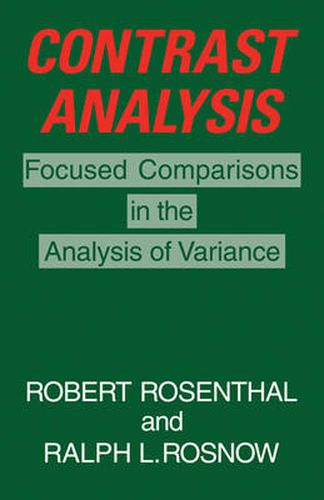Readings Newsletter
Become a Readings Member to make your shopping experience even easier.
Sign in or sign up for free!
You’re not far away from qualifying for FREE standard shipping within Australia
You’ve qualified for FREE standard shipping within Australia
The cart is loading…






This is the first text for those seeking appropriate statistical approaches to research data that is devoted entirely to the topic of contrasts. Contrast analysis permits us to ask more focused questions of our data. In return for a small amount of simple computation, we get very much greater statistical power, and can make very much clearer substantive interpretations of our research results. Contrast analysis should be employed in the context of the analysis of variance whenever the numerator degrees of freedom are greater than one (which is probably most of the time). Unfortunately, it is employed relatively rarely by behavioural and social scientists. This book makes it possible for non-mathematical data analysts to avail themselves of contrasts, and thereby simply and efficiently to address the focused questions posed by their theories, hypotheses, and hunches.
$9.00 standard shipping within Australia
FREE standard shipping within Australia for orders over $100.00
Express & International shipping calculated at checkout
This is the first text for those seeking appropriate statistical approaches to research data that is devoted entirely to the topic of contrasts. Contrast analysis permits us to ask more focused questions of our data. In return for a small amount of simple computation, we get very much greater statistical power, and can make very much clearer substantive interpretations of our research results. Contrast analysis should be employed in the context of the analysis of variance whenever the numerator degrees of freedom are greater than one (which is probably most of the time). Unfortunately, it is employed relatively rarely by behavioural and social scientists. This book makes it possible for non-mathematical data analysts to avail themselves of contrasts, and thereby simply and efficiently to address the focused questions posed by their theories, hypotheses, and hunches.